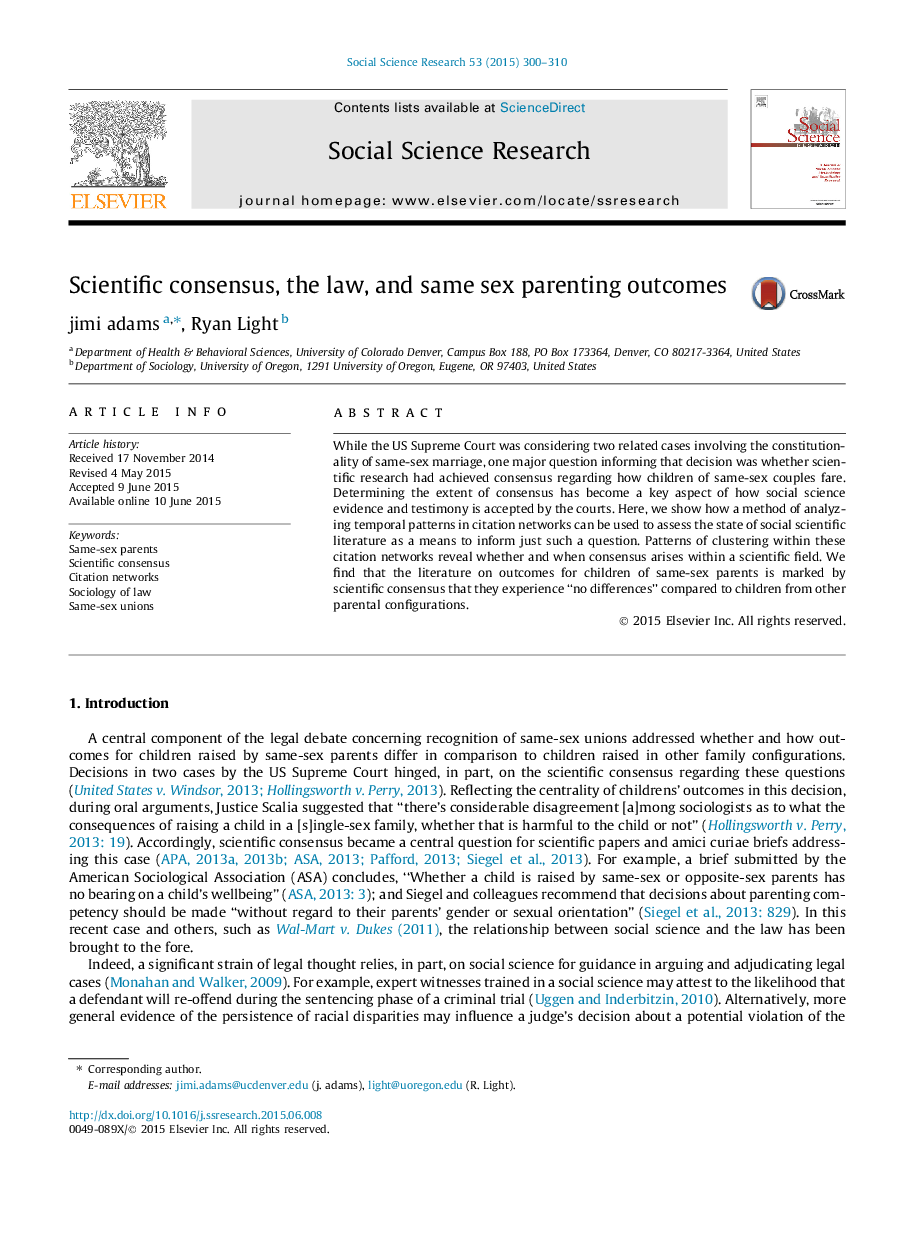| Article ID | Journal | Published Year | Pages | File Type |
|---|---|---|---|---|
| 955672 | Social Science Research | 2015 | 11 Pages |
•We demonstrate how citation networks can evaluate scientific consensus.•Estimating consensus requires a dynamic temporal conceptualization.•Consensus on outcomes for children of same-sex parents arose by the late 1990s.•Our estimation procedure is relatively robust to noise in the data.•That consensus reflects “no differences” on most examined outcomes.
While the US Supreme Court was considering two related cases involving the constitutionality of same-sex marriage, one major question informing that decision was whether scientific research had achieved consensus regarding how children of same-sex couples fare. Determining the extent of consensus has become a key aspect of how social science evidence and testimony is accepted by the courts. Here, we show how a method of analyzing temporal patterns in citation networks can be used to assess the state of social scientific literature as a means to inform just such a question. Patterns of clustering within these citation networks reveal whether and when consensus arises within a scientific field. We find that the literature on outcomes for children of same-sex parents is marked by scientific consensus that they experience “no differences” compared to children from other parental configurations.
